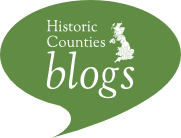Introduction
The aim of this Directory is both to encourage the continued use of county names within postal addresses and to promote a return to the use of the historic counties as the standard county names used.
The Directory is essentially a list of the historic county for each post town of the UK. From this the historic county for any UK address can easily be determined.
Why include a “county line” in postal addresses?
Under the Royal Mail’s Flexible Addressing Policy there is no need to include any kind of “county line” at all in any UK postal address. However, there are good reasons to continue to use county names within most postal addresses since:
- they add invaluable geographical information to an address, making it instantly clear approximately where a particular address is located. There are around 1600 Post Towns in the UK. Few people could locate more than a small minority of these from memory. Most businesses, organisations and individuals will want to use a form of postal address from which their location is instantly clear. The county element is extremely useful in this context.
- they can be vital in enabling a determination of the full postal address on those millions of letters posted everyday where the postcode and/or Post Town names are missing or incorrect. There are numerous duplicate locality and post town names in the UK. The county information is critical to address matching in such cases.
- they are a simple but effective way of expressing pride and affection for one’s county.
Why Use the historic counties in postal addresses?
Under the Royal Mail’s Flexible Addressing Policy, the historic county names can be used in any UK postal address.
The expression “historic county” is a way of referring to those ancient territorial areas into which the country has been divided for many centuries and which are commonly known simply as “the Counties”. These are the Counties of our history, our popular geography and our sense of cultural identity. They are the basis of innumerable social, sporting and cultural activities. They form a general-purpose geographical framework which is understood by most people. Above all else, they are places – places where people live and “come from”, where they “belong”.
Until 1974 the historic county names formed the “county” element in Post Office recommended postal addresses throughout most of the United Kingdom. However, in 1974, the Post Office changed the “postal counties” in Wales and some parts of England, basing the new ones on some of the new local government areas created in that year. Hence, such entities as “Avon”, “South Humberside” and “Dyfed” began to appear in postal addresses. However, these new “postal counties” were unpopular with many people and the historic county names have continued to be widely used in those areas affected. Furthermore, this policy was only applied to a part of the UK. In Scotland, Northern Ireland and much of England historic counties continued to form the “postal counties”.
Ironically, all but one of the local authorities from which the new 1974 “postal counties” took their names were abolished within 22 years ! Names such as “Clwyd”, “North Humberside” and “Cleveland” are now long since historically redundant. Meanwhile, of course, the historic counties in these areas continue to be important cultural and geographical entities. The lesson is clear. In areas such as postal addressing, it is clearly desirable to use a fixed geographical framework: one divorced from the very changing names and areas of administrative units but, instead, rooted in history, tradition, public affection and understanding. The historic counties provide this geographical framework and are the only sensible choice to use as the county element in postal addressing.
